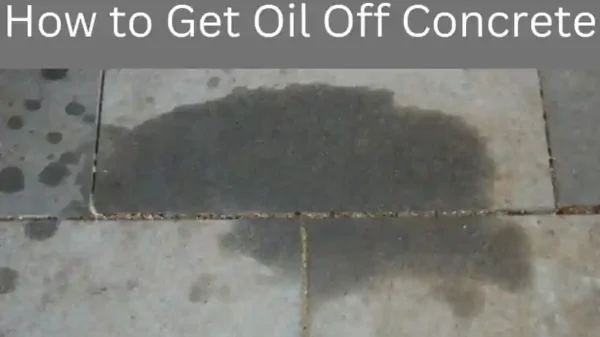Stain hardwood floors’ inherent beauty can be significantly enhanced by staining them to give them a new, lively appearance. Achieving a professional finish requires effort, skill, and preparation, whether you’re restoring old flooring or customizing new wood. From preparation to sealing, this guide will walk you through the entire procedure step by step.
1. Understanding Hardwood Floor Staining
1.1 What is Hardwood Floor Staining?

Applying a colored substance to wood in order to change its color, bring out its grain, and preserve its surface is known as staining. It enables you to restore the original attractiveness of your flooring or alter it to meet your décor.
1.2 Why Stain Hardwood Floors?
- Aesthetic Appeal: Brings out the grain’s inherent beauty.
- Customization: Provides a variety of color choices.
- Restoration: Brings worn-out, aged floors back to life.
- Protection: Adds durability and gets the floor ready for sealing.
2. Tools and Materials Needed
Before starting, gather the following tools and materials:
2.1 Tools
- Sanding device (orbital sander or drum sander)
- Sanding block or handheld sander, vacuum cleaner, and tack cloth
- Paintbrushes, stain applicator pads, microfiber cloths, or lint-free rags
- Tape for painters
2.2 Materials
- Water-based or oil-based wood stain
- Wood filler (optional, for flaws or cracks)
- Polyurethane or floor sealer (gloss, satin, or matte finish)
- Mineral spirits (for removing stains that are based on oil)
3. Preparing for Staining
The secret to a good staining project is preparation. Ignoring this step may lead to inconsistent application and subpar outcomes.
3.1 Clear the Room
- Clear the space of all furnishings, carpets, and decorations.
- Painter’s tape can be used to shield windows, vents, and nearby surfaces from dust and stains.
3.2 Clean the Floor

- To get rid of any loose dirt or debris, sweep or vacuum the floor.
- For a deep clean, use a damp mop, but wait until the floor is totally dry before continuing.
3.3 Sand the Floor
Sanding opens the wood grain for improved stain absorption, smoothes out flaws, and eliminates the old finish.
- Select the Appropriate Grit: Start with 40–60 grit coarse-grit sandpaper and work your way up to 100–120 grit finer grit.
- Employ a sander: Sand the floor evenly, paying attention to the wood’s grain.
- Edge Sanding: Sand edges and corners with a sanding block or handheld sander.
- Vacuum Completely: To guarantee a clean surface, use a vacuum and tack cloth to remove all dust.
3.4 Fill Cracks and Gaps
- Apply wood filler to cracks and gaps, if necessary, and allow it to dry.
- Sand the filled areas for a smooth finish.
4. Applying the Stain
4.1 Choose the Right Stain
- Oil-Based Stains: Provide rich, durable color and penetrate deeply.
- Water-Based Stains: Perfect for households with kids or pets, these stains dry rapidly and have a mild smell.
4.2 Test the Stain
- Apply the stain to an inconspicuous spot or a scrap piece of the same wood.
- After it dries, check the color to make sure it looks the way you want it to.
4.3 Apply the Stain
- Begin at the edges: Apply stain to the floor’s margins using a paintbrush.
- Put on the Main Surface: Apply the stain evenly across the floor, following the grain of the wood, using an applicator pad or lint-free rag.
- To ensure that you can remove the extra stain before it dries, work in small sections.
4.4 Wipe Off Excess Stain
- Immediately after application, remove any excess stain with a lint-free, clean rag.
- Wiping keeps the wood from becoming blotchy and improves the grain.
Advice: After the first coat dries fully, apply a second coat if you want a darker color.
5. Letting the Stain Dry
- As advised by the manufacturer, let the stain dry for at least 24 hours.
- To prevent a significant odor accumulation, make sure there is adequate ventilation during the drying process.
6. Sealing the Hardwood Floor
Sealing protects the stained floor and adds a beautiful finish.
6.1 Choose the Right Sealer
- Polyurethane: Durable and water-resistant; available in oil-based and water-based formulas.
- Wax: Provides a natural look but requires more maintenance.
6.2 Apply the Sealer
- Apply the sealer evenly using a clean brush, roller, or applicator pad.
- To prevent streaks or bubbles, apply equal, thin coatings.
- Let the first coat dry completely, which usually takes 4 to 8 hours.
- Before adding more coats, lightly sand the surface with a fine-grit sandpaper.
- For optimal protection, apply at least two or three coats.
6.3 Let the Sealer Cure
- Most sealers need 48 to 72 hours to cure before the floor is safe for modest foot usage.
- Keep rugs and furniture off the floor until the sealer has completely dried, which usually takes seven days.
7. Maintaining Stained Hardwood Floors

To keep your floors looking beautiful:
- Frequent Cleaning: To get rid of dirt and debris, sweep or vacuum.
- Steer clear of harsh chemicals by mopping with a wood-safe cleaner.
- Protective measures: To avoid scratches, place felt pads underneath furniture legs.
- Refinish Occasionally: To preserve the finish, reapply the stain and sealer every five to ten years.
8. Troubleshooting Common Issues
8.1 Uneven Stain Application
Cause: Inadequate stain removal or uneven sanding.
Solution: Reapply the stain and resell the impacted area.
8.2 Sticky or Tacky Finish
Cause: Inadequate drying time or improper stain removal.
Solution: Remove any extra discoloration by wiping it off and letting it dry longer before sealing.
8.3 Visible Bubbles in Sealer
Cause: Using a dirty applicator or applying the sealer too hastily.
Solution: Reapply the sealer after carefully sanding the impacted area.
9. Frequently Asked Questions
9.1 Can I Stain a Pre-Finished Hardwood Floor?
Yes, but for the stain to penetrate, you must first sand off the existing finish.
9.2 How Do I Match the Stain Color to My Décor?
To test different stain colors in the lighting of your room, use sample boards.
9.3 How Long Does the Entire Process Take?
The project should take three to five days to complete, depending on drying times.
10. Conclusion
Hardwood floor staining is a satisfying process that can change your room. You may get gorgeous, expert results by following the preparation, application, sealing, and maintenance procedures described in this book. Enjoy the beauty of your freshly stained hardwood floors for many years to come by taking your time and being meticulous in your work.
With comprehensive directions for each step of the process, this guide is well over a thousand words long. If you require any new sections or customization, please let me know!







